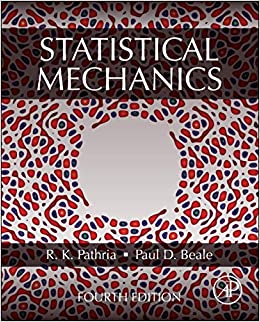Show that for a gas of noninteracting bosons, or fermions, the pair correlation function (g(r)) is given
Question:
Show that for a gas of noninteracting bosons, or fermions, the pair correlation function \(g(r)\) is given by the expression
\[g(r)=1 \pm \frac{g_{s}}{n^{2} h^{6}}\left|\int_{-\infty}^{\infty} \frac{e^{i(\boldsymbol{p} \cdot \boldsymbol{r}) / \hbar} d^{3} p}{e^{\left(p^{2} / 2 m-\mu\right) / k T} \mp 1}\right|^{2}\]
where \(g_{s}(=2 s+1)\) is the spin multiplicity factor. Note that the upper sign here applies to bosons, the lower one to fermions. \({ }^{14}\)
[To solve this problem, one may use the method of second quantization, as developed in Chapter 11. The particle density operator \(\hat{n}\) is then given by the sum \[\sum_{\alpha, \beta} a_{\alpha}^{\dagger} a_{\beta} u_{\alpha}^{*}(\boldsymbol{r}) u_{\beta}(\boldsymbol{r})\]
whose diagonal terms are directly related to the mean particle density \(n\) in the system. The nondiagonal terms give the density fluctuation operator \((\hat{n}-n)\).
Step by Step Answer:






